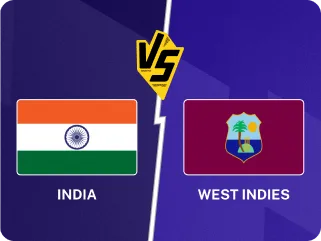
Once earmarked as Australia’s next star, Cameron Green now finds himself searching for a fixed position in the team without answers, writes Sarah Waris.
When Cameron Green made his Test debut against India in December 2020, he arrived with the weight of expectation that few young Australian cricketers have carried. Touted as the finest talent since Ricky Ponting, Green's reputation was backed by numbers. In 21 first-class matches before his debut, he had already scored five centuries, including 197 against New South Wales in October 2020.
He averaged 55.04 with the bat and, with the ball, had 33 wickets at an impressive 21.72, including two five-wicket hauls. Though widely exaggerated in hindsight, there was genuine belief at the time that Green could one day draw comparisons with the likes of Jacques Kallis and Shane Watson, true all-format all-rounders who offered both batting stability and were valuable seam-bowling options.
Fast forward to July 2025, and the numbers suggest a player who has been unable to live up to his potential. In 48 innings, Green has scored two centuries and six fifties at 33.13 with the bat. He also has 35 wickets at 35.31. The label of a generational talent, though, has faded, replaced by a more measured assessment of a player still searching for consistency and a fixed role in the Australian team.
Cameron Green is neither here nor there
In his first two years of Test cricket, Green played 18 Tests, making 806 runs at 35.04, all while batting at No.6 or 7. With 23 wickets as well, he soon became an indispensable member of the side. He also made a hundred at Ahmedabad in 2023, but a minor hamstring injury during the Ashes that year saw him being replaced by seam all-rounder Mitchell Marsh for the third Test.
Marsh smashed 118 in 102 balls, prompting discussion over whether he should retain his place in the side even after Green became fit. Both Marsh and Green played the fourth Test, but another quiet game saw the latter being dropped for the fifth match. Green did not find a place in the side that faced Pakistan in the summer of 2023/24, but David Warner’s retirement saw him back in the reckoning.
Since Warner retired last January, five different players have partnered Usman Khawaja at the top of the order. Green made a Test comeback against the West Indies in 2024 after Steve Smith was asked to open the innings. Promoted up to his preferred No.4, he made a career-best 174 not out against New Zealand. However, a recurrence of his back stress fracture sidelined him from action, and he played no Tests until the WTC final in June 2025.
In the meantime, Australia continued to reshape their batting order in search of stability. Sam Konstas impressed in limited opportunities but found himself sidelined as the side leaned on experience at the top. Smith returned to his preferred No.4 position after an unsuccessful stint as an opener. Beau Webster, with four half-centuries in nine innings and five wickets with the ball, has quietly provided the kind of balance Australia had long envisioned Green would offer.
Meanwhile, Green, who is yet to bowl on return, is playing only as a specialist batter. To fit him in, Labuschagne was shifted up, opening alongside Khawaja in the WTC final, while Green slotted in at No.3 for the first time in his career. The move, however, did not yield results for either batter. Labuschagne made 17 and 22, while Green amassed four across two innings. While Labuschagne was subsequently dropped for the West Indies series, Green continues to hold his place despite modest returns. In five innings at first-drop, Green has scored 4, 0, 3, 15, and 26, a total of just 48 runs at an average of 9.60.
The larger question now is whether Green, without the ability to contribute with the ball, can justify a place in the side purely as a batter. There is some evidence to suggest he can. Ahead of the WTC final, he enjoyed a successful county season with Gloucestershire, scoring 467 runs at an average of 66.71 in six matches, including three centuries, all coming while batting at No.5 or lower. It reinforced the belief that Green is more suited to a middle-order role, where he has time to settle and play his natural game, away from the pressures of the new ball.
Also read: Debut hundred, dropped, dropped again: The strange Test career of Josh Inglis
Yet the dynamics of Australia’s current Test side have not allowed for such consistency. With Smith fixed at No.4 and Webster established at No.6, Green has been left filling whichever gap has appeared rather than being anchored to a clear role. Despite suggestions that Green could open, recent injuries make workload management a concern.
Skipper Pat Cummins and coach Andrew McDonald have spoken about the importance of giving players extended runs, recognising the perils of constant reshuffles, but the broader reality is more complex. Australia's top and middle orders remain unsettled, and players like Green have struggled to find footing.
The challenge ahead is twofold: For Green, to regain full fitness and re-establish himself as an all-round option, and for Australia to offer clarity, not just to the all-rounder, but to the broader group, which has been missing during this prolonged phase of transition. For now, Green remains a cricketer suspended between promise and uncertainty: neither firmly settled nor entirely dispensable, a player clinging to opportunity without a clear sense of what comes next.
Follow Wisden for all cricket updates, including live scores, match stats, quizzes and more. Stay up to date with the latest cricket news, player updates, team standings, match highlights, video analysis and live match odds.








